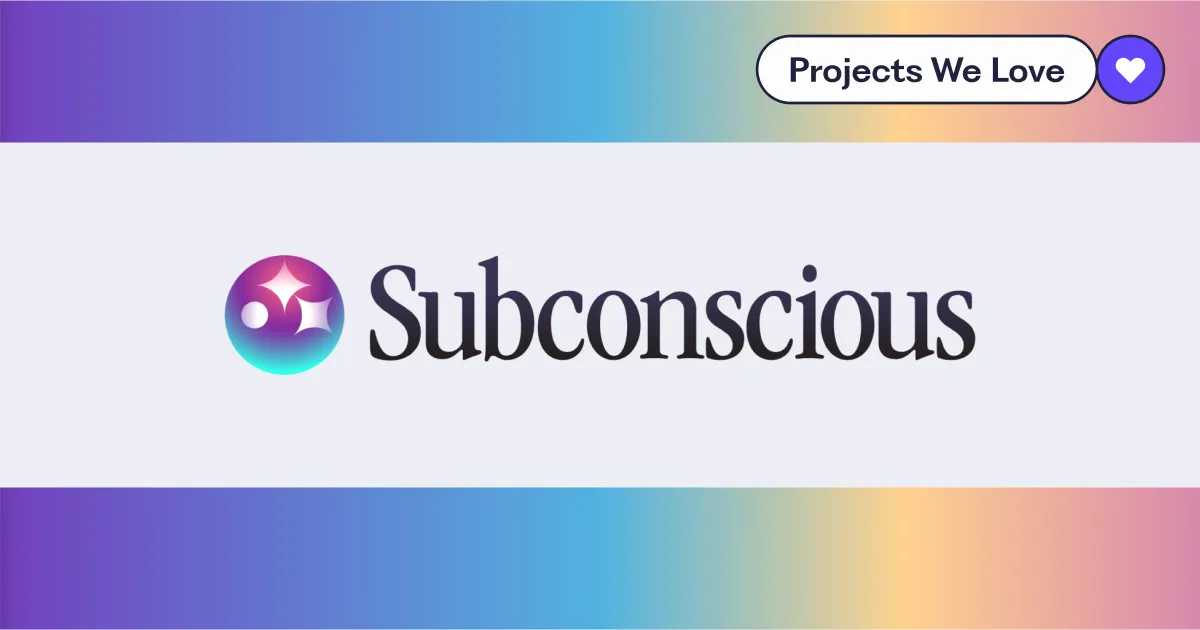You should own your thoughts.
This may seem like an odd statement. "Of course, I own my thoughts," you think to yourself. But when you take those thoughts and enter them into a notes app, are you always guaranteed access to those ideas?
Most note-taking apps are centralized tools. If a company that runs the app goes out of business, users lose all of their content - that's years of valuable insights.
And what if you become unhappy with the direction the app is taking, and you wish to take your notes to one that has more of the features you desire? Good luck trying to switch seamlessly. It's unlikely that the apps will interoperate with each other, leaving you stuck spending countless hours trying to reconfigure your notes on the new platform.
Furthermore, since these centralized apps are walled gardens, your friends and connections are left behind, leaving you missing out on the social aspect of shared note-taking.
But the web wasn't always this way.
It started as a way for researchers and academics to share information worldwide. Distributed nodes were established at institutions and universities, enabling users to uncover important insights faster and make breakthroughs. Everything interoperated because it was built on open protocols, and data always stayed with the user first.
How can we return to this way of working and collaborating on the web?
That was the question Gordon Brander and Chris Joel had two years ago. Brander and Joel wanted to find a way to build a worldwide knowledge graph that would empower users to own their thoughts and surface connections that they wouldn't have otherwise realized were there, all while connecting with others to work more efficiently.
Open Protocols and Their Benefits
Brander and Joel started building Subconscious, a local-first decentralized note-taking app. They began with the protocol that would power the app - Noosphere. Noosphere is permissionless and open source, like HTTP or IMAP; anyone can build on top of it. That means even if the Subconscious app goes away one day, anyone running the Noosphere protocol can resurrect it. Content AND contacts can also move with the user to another platform built on Noosphere, creating a credible exit.
All the content users create is stored on IPFS. IPFS uses content-addressable data created by a cryptographic hashing process that generates a unique identifier (CID). The CID acts as a hard link that points to a specific version of a file. This data structure enables two important things - distributed file storage and version control.
Distributed file storage makes the Subconscious app more resilient and able to work offline and local-first. And since IPFS is a shared resource with high adoption in both the Web3 and DWeb spaces, this is another reassurance that the user's notes are safe.
Version control allows Subconscious to create a daisy chain of edits synced across all devices. Furthermore, users can use this structure to review previous versions if they need to restore their notes or memo to an earlier state.
Data is linked using hypertext. These integrated hyperlinks enable users to build their knowledge networks.
The Heart of Subconscious - Notes, Memos, and Spheres
Noosphere is a protocol made up of networked "spheres." Your sphere is your portable data backpack. Spheres contain your content as "notes" and "memos".
Like a letter envelope, memos wrap your notes and add some additional metadata, including an IPFS content ID that points to the version history for that file (the previous version of that memo). Subconscious puts note files in memos, but you can put any file in a memo, making Noosphere a versatile tool.
Spheres also contain contacts, similar to an address book of other spheres you follow.
Finally, spheres are not a server. They are a data structure that lives on your device (local first) and on IPFS. That means your sphere is decentralized, and you always have your data. And spheres are signed with your cryptographic key, so they are secure and can be verified as belonging to you.
Subconscious users can delegate and revoke access to their spheres anytime because the tool utilizes UCANs. Created by Fission's co-founder and CTO, Brooklyn Zelenka, UCANs handle authorization in distributed systems by leveraging capabilities rather than ACLs. Users delegate their capabilities rather than their keys, making it very secure. Each agent in the system identifies itself using a keypair, and the user delegates capabilities (permissions) to the keypair.
In Summary
Subconscious is open source and transparent and provides users with a credible exit. No walled gardens or predatory privacy policies leaving users feeling powerless with few viable alternatives. Open source protocols that bring transparency and trust are utilized to thwart centralization.
Users don't sacrifice the multi-player experience. Subconscious users will enjoy networked intelligence effects when they follow other users, making connections and gleaning insights that might have otherwise eluded them. This will amplify users' productivity, creativity, and ability to collectively solve big problems.
Getting Started
Subconscious is now in beta. Join the waitlist!
